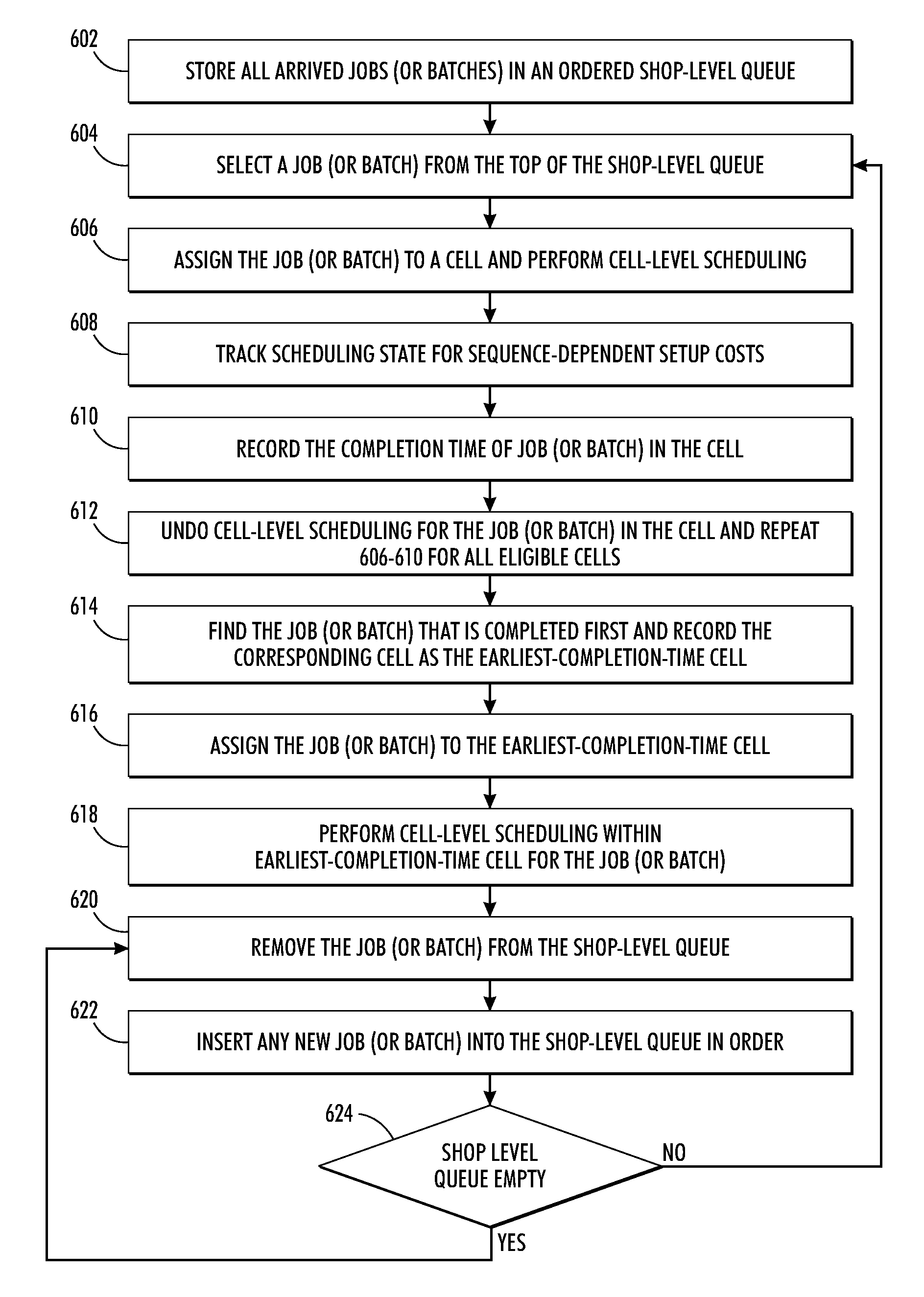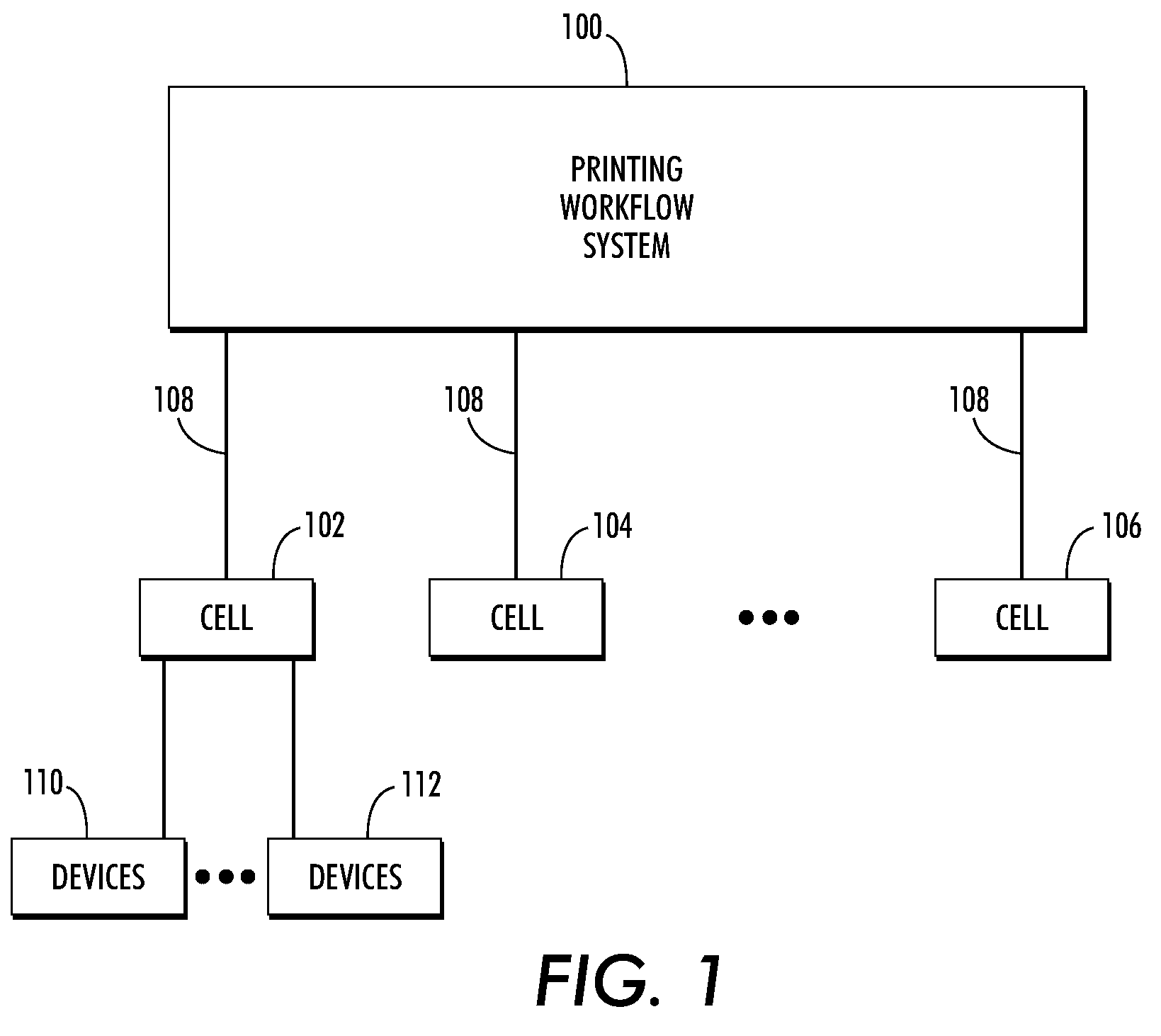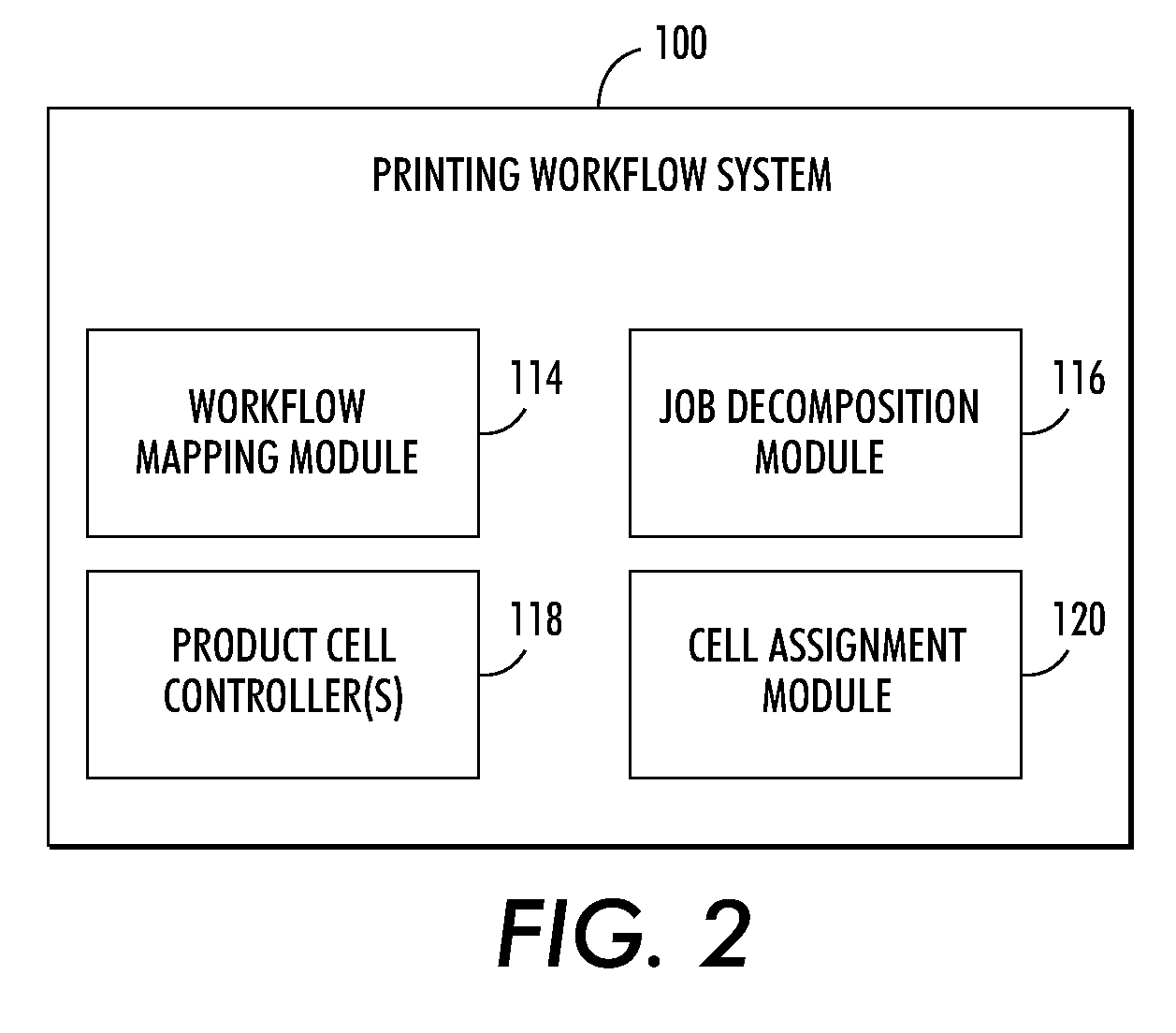Dynamic scheduling of jobs/batches using earliest completion time algorithm in cellular manufacturing with batch-splitting of jobs above certain size
a technology of cellular manufacturing and batch splitting, applied in the direction of multi-programming arrangement, total factory control, programme control, etc., can solve the problems of sequence-dependent setup cost, large job size, and distributions that cannot be sufficiently characterized
- Summary
- Abstract
- Description
- Claims
- Application Information
AI Technical Summary
Benefits of technology
Problems solved by technology
Method used
Image
Examples
Embodiment Construction
[0025]The disclosed embodiments contemplate the use of a lean production process server (LPPS) running appropriate software to act as a scheduler for coordinating production of document processing jobs in a document factory (such as a print shop). The server exploits lean production techniques to control document processing jobs, and can be run on a number of different platforms, including but not limited to, UNIX and Windows (“UNIX” is a registered trademark of the Open Source Group, while “Windows” is a registered trademark of Microsoft Corporation) based-platforms. The server determines workflow priorities and manages workflow accordingly. Those skilled in the art will appreciate that the presently disclosed embodiments may also be practiced with platforms that run other varieties of operating systems. Moreover, the server need not run on a dedicated computer system but rather may run on another variety of electronic devices, such as a printer, copier, etc. Workflow priorities fo...
PUM
 Login to View More
Login to View More Abstract
Description
Claims
Application Information
 Login to View More
Login to View More - R&D
- Intellectual Property
- Life Sciences
- Materials
- Tech Scout
- Unparalleled Data Quality
- Higher Quality Content
- 60% Fewer Hallucinations
Browse by: Latest US Patents, China's latest patents, Technical Efficacy Thesaurus, Application Domain, Technology Topic, Popular Technical Reports.
© 2025 PatSnap. All rights reserved.Legal|Privacy policy|Modern Slavery Act Transparency Statement|Sitemap|About US| Contact US: help@patsnap.com



